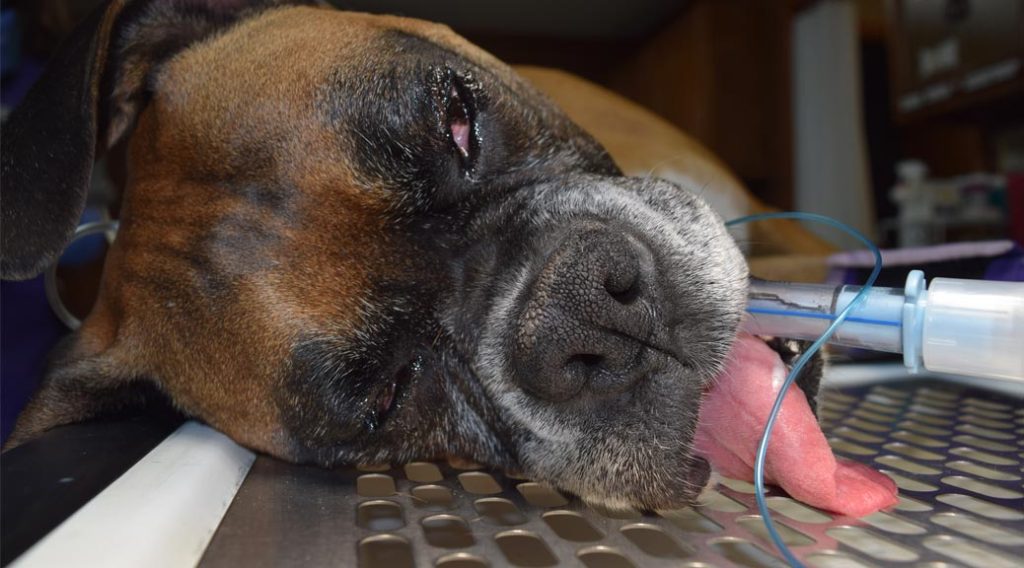Given the importance of dental health care for pets, I want to give you a behind-the-scenes look at my own boxer—General Stubs Calhoun—and his visit to the clinic for a dental cleaning and exam. I hope this post will not only answer any questions you may have about what goes on during a dental procedure, but also show you that I personally consider dental health care essential for all pets, including my own.
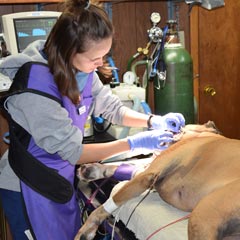
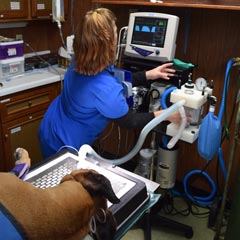
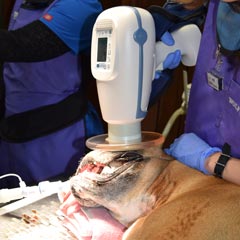
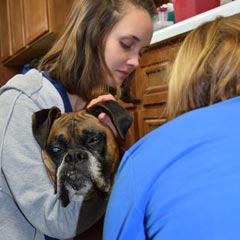
Cal turned seven this past July. It had been two years since his last dental cleaning.
As a boxer, Cal is at higher-than-average risk for a condition called gingival hyperplasia, causing his gums to proliferate and grow so extensively as to cover his teeth. Cal has this condition, so in addition to cleaning his teeth two years ago, we did a gingival resection, in which we removed the excess gum tissue in several areas of his mouth. He recovered very nicely and had been doing just fine.
But several months ago, we noticed Cal was not chewing his rawhides the way he used to, and he had a slightly pungent odor to his breath. I did a physical exam, finding a little tartar and a few areas of gingival hyperplasia. I didn’t see any obvious signs of abscessed teeth. Still, I knew something was wrong, so I decided to bring him in for a complete dental exam, including full-mouth dental radiographs (x-rays).
The procedure started with the necessary preanesthetic blood work to make sure Cal had no underlying health issues that might make anesthesia too risky. Once we had Cal under anesthesia, we did our radiographs and found several fractured teeth. The fractures were below the gum line, so there was no way to see them–even with a regular dental cleaning and probing–without the x-rays.
We extracted the cracked teeth and resected the overgrown gums. We scaled and polished the remaining teeth.
Cal has recovered very well. He did need to eat a soft diet for about 10 days, but after that, resumed eating his usual dry kibbles. And he’s back to enjoying his rawhides!
I understand it can be a little scary to consider putting an older pet like Cal under anesthesia for a dental cleaning. That’s why we take measures to minimize the risks.
- We require blood work within the past six months to be sure all organs are functioning well and able to handle the medications we use.
- We use the safest anesthesia available.
- All pets have intravenous catheters and receive fluids throughout the procedure.
- While one technician cleans the teeth and makes the x-rays, another focuses throughout the procedure on monitoring the patient’s oxygen and carbon dioxide levels, electrocardiogram, heart rate, blood pressure and temperature using monitoring equipment very similar to what you would find in a human hospital.
Still on the fence about scheduling your pet’s dental appointment? Here are some additional resources from the American Veterinary Medical Association, including links to a dental health quiz, videos to help you teach your pet to accept home tooth-brushing and even more information about the “whys” of dental health care for your companion animal.

